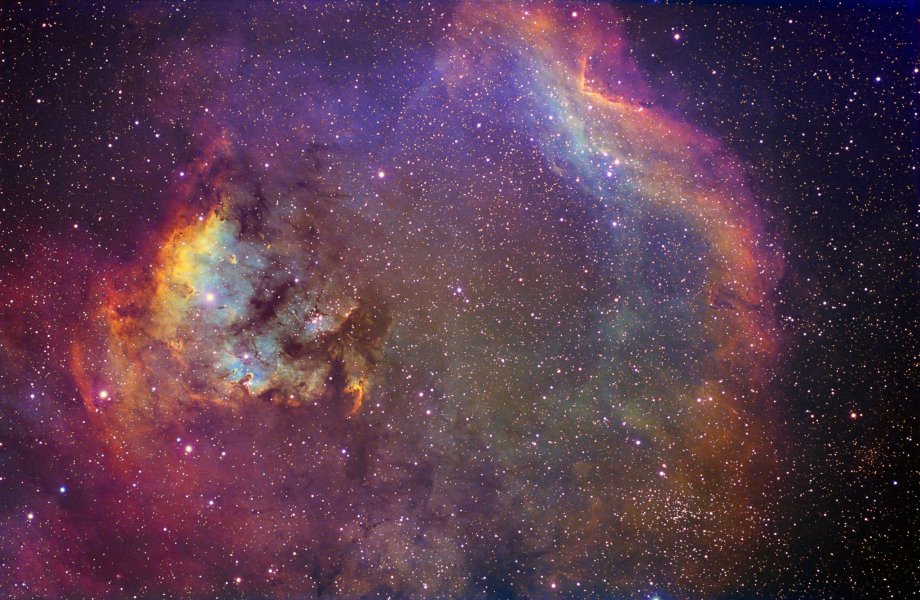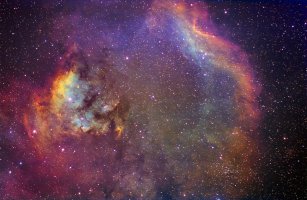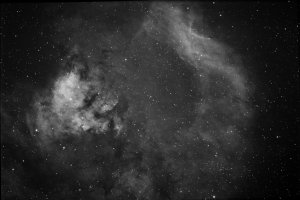Cederblad 214 and NGC 7822 |
||
 |
||
|
||
| Cepheus the constellation lies The northern
sky, not too far from Polaris and always above the horizon from
my backyard. Its church-steeple shape represents the ancient
Greek king of its namesake, with Cassiopeia his queen following
in his footsteps. This regal constellation is host to many
emission nebulae, including Cederblad 214, the bright nebula to
the left, and NGC 7822, the fainter arc on the right. Like many emission nebulae (designated from the light emitted by gases ionized by stars embedded within them), this object is a huge star nursery. Stars born within the giant clouds of gas and dust of this object light up its gases with ionizing radiation, and blow away their shrouds of dust with strong stellar winds. The latter is evidenced by the comet-like shapes of the dark dust clouds, pointing back at the stars causing their erosion. While Cepheus is above the horizon at my location, it (and objects lying within its boundaries) are best seen during late summer and early fall. Cederblad 214 and NGC 7822 are both very faint and tough to see visually. I don't recall ever even trying to see these objects from my backyard. |
||
| Constellation: Cepheus | ||
| When Visible: August - January | ||
| Distance: 6,000 Light-years | ||
| Date: September - October 2007 | ||
| Location: West Chester, Ohio | ||
| Exposure Details:
H-alpha: 12 x 30 minutes Binned 1x1 (mapped to Green in Hubble Palette) SII: 14 x 30 minutes Binned 1x1 (mapped to Red in Hubble Palette) OIII: 14 x 30 minutes Binned 1x1 (mapped to Blue in Hubble Palette) |
||
| Equipment Used: Takahashi FSQ-106N on a Takahashi EM200 Temma-PC mount. SBIG STL-6303 camera with 8-position filter wheel and Astrodon narrowband filters. Externally guided with an SBIG Remote Guide Head on a Borg 45ED refractor. | ||
| Acquisition Software : MaximDL, TheSky6, CCDAutopilot | ||
| Processing Software: MaximDL, Photoshop CS, IrFanView | ||


